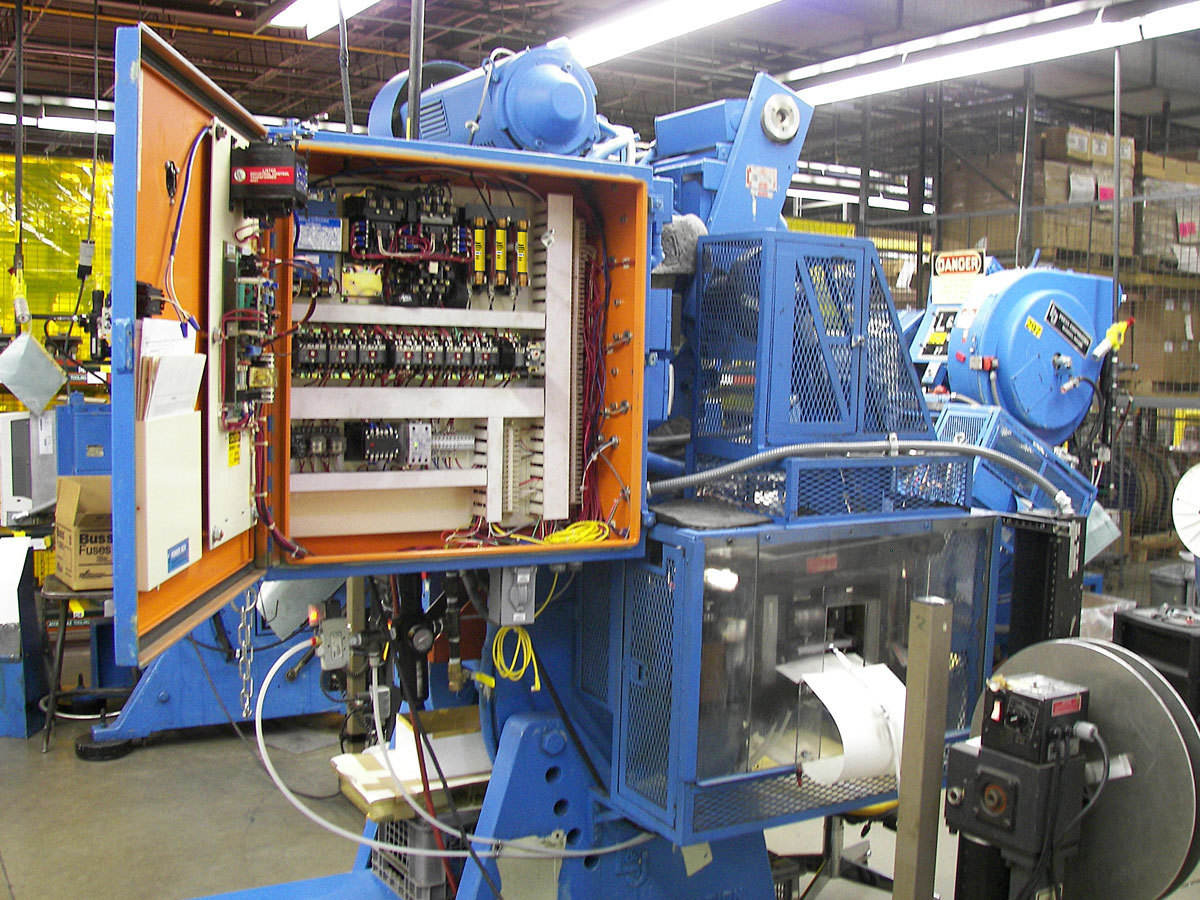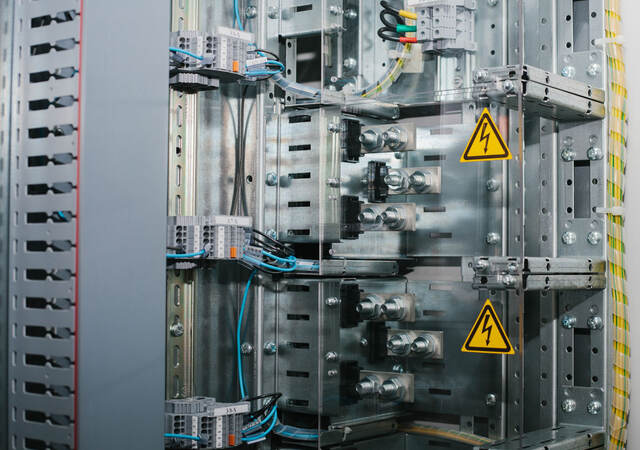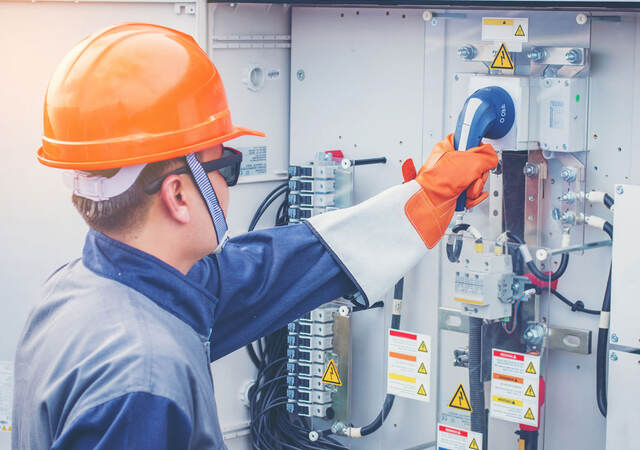To help you learn more about how a short-circuit current rating (SCCR) is determined for machinery according to the 2021 edition of the NFPA 79, UL Solutions and Eaton Bussmann division experts have teamed up to provide answers to the following frequently asked questions from our related webinar.
What is meant by “the available fault current at each machine supply circuit disconnecting means”?
A machine may be provided with more than one source of supply. The available fault current at the line terminals of each machine supply circuit disconnecting means must be known in order to determine if the control panel that contains the disconnecting means has an adequate short-circuit current rating. Regardless of the number of control panels provided for a single machine, each supply circuit must have a short-circuit current rating at least equivalent to the available fault current at the line terminals of every machine supply circuit disconnecting means.
Is a short-circuit current rating (SCCR) needed for all panels on a machine with multiple panels?
Yes, all panels used to provide control for a specific machine must be provided with a short-circuit current rating. The short-circuit current rating for each panel is necessary to determine the short-circuit current rating for the machine.
If the SCCR of the machine is not adequate for the fault current at the installation site, can you use series ratings per the National Electric Code® (NEC®)?
Series ratings is a field-applied solution. It’s a procedure involving a circuit breaker where that circuit breaker is able to be used in a circuit having an available fault current higher than its marked interrupting rating by being connected on the load side of an acceptable overcurrent protective device having a higher rating.
Two methods can achieve a series rating: by calculation or by testing. The calculation method requires the involvement of a licensed professional engineer. The testing method requires short-circuit testing of the combination of the series connected protective devices and the end use equipment. The calculation method is somewhat complex as the engineer needs to demonstrate that the downstream circuit breaker that is part of the series combination remains passive during the short-circuit interruption period of the line side protective device. The test method requires the series connected protective devices to be short-circuit tested with the control panels of the machine to demonstrate they are coordinated under short-circuit conditions. The likelihood that a specific set of series-rated devices has been tested with a control panel provided for a specific machine is quite small. Taking into account the difficulties of applying either method to a specific machine, series ratings is not a preferred solution for addressing an inadequate short-circuit current rating.
When calculating SCCR for the machine, how do the requirements for National Fire Protection Association® (NFPA®) 79 compare to UL 508A, the Standard for Industrial Control Panels?
When determining the SCCR for UL Listed industrial machinery, UL 508A Supplement SB would be the method used to determine the SCCR and NFPA 79 is the standard/guide for designing and building the industrial machinery.
When reviewing an arc flash assessment for completeness, how do I know if the third party that conducted the assessment included the panel SCCR in the calculations?
When your facility is completing its arc flash assessment, ask the third party that conducted the assessment if they considered all panel SCCR. If they have not, have them review the arc flash assessment for the proper SCCR and identify panels with an inadequate SCCR. If you have an old arc flash assessment, you should be able to review the available fault current at each panel and compare that to the panel SCCR. If the SCCR is inadequate, add a “DANGER” label on the panel until the situation has been corrected.
Where do you install the main nameplate on a machine with multiple panels?
When a single machine has multiple industrial control panels, if the industrial control panels are UL Listed, per UL 508A, each industrial control panel must have its own nameplate that includes the SCCR. However, the industrial machinery main nameplate and overall SCCR will be marked on the panel connected to the supply conductors from the facility.
If the industrial machinery has more than one feed to the facility, the main panel to the machine will have the machine nameplate as well as each industrial control panel that is fed from the facility that will have a nameplate and the SCCR for that section of the machine. For example, a robot controller machine may have one main power industrial control panel fed from the facility, as well as several robot controls fed from the facility. The main panel will have the machine nameplate and an SCCR for that panel, and the robot controller panels will have their own nameplate and an SCCR for the individual robot controller.
Do current limiting fuses need to be installed inside the main control panel enclosure?
No, they can be installed in a separate enclosure feeding the main control panel.
Do terminal blocks have an SCCR?
Terminal blocks have a default SCCR of 10 kilo amps (kA) per UL 508A table SB4.1.
Regarding required information on nameplates, based on new requirements in the 2021 edition of NFPA 79, does SCCR need to be called "available fault current" or can it still be marked as SCCR on the nameplates?
Clause 16.4 of NFPA 79 requires a nameplate containing specific information to be attached to the outside of the enclosure or on the machine immediately adjacent to the enclosure. No changes were made to the requirement to mark the short-circuit current rating on the nameplate. The introduction of the term “available fault current” is the result of changes in the 2020 NEC. When inspecting machinery, verification of SCCR being equal to or greater than the available fault current can be identified.
Do cord- and plug-connected equipment/appliances have associated SCCRs when you're incorporating them into your machine design? For example, if you have a cord and plug power supply powering a panel on your machine, does it have an SCCR?
Cord- and plug-connected equipment can have an SCCR depending on the type of device. Generally speaking, appliances do not have an SCCR. A cord- and plug-connected power supply would most likely not have an SCCR and would not be required to have an SCCR.
Do direct current (DC) power supplies have SCCRs associated with them?
No, they are not required to have an SCCR.
Are panels supplied by a 24 volt direct current (VDC) supply required to have an SCCR rating?
If the panel has only control circuits, then an SCCR is not required. If it has at least one power circuit, then an SCCR is required.
What about a 24 VDC power supply with a 20 amp output rating? Should this be factored into the SCCR?
Generally speaking, power supplies are not required to have a short-circuit current rating and are not factored into the overall SCCR for a machine. An exception would be a converter section that creates a DC bus voltage for a variable frequency drive.
Can you use current limiting protection in the main control panel when it's supplying one or more panels to limit the available fault current to those panels? Does current limiting reduce the fault current to those panels?
Yes, in answer to both. However, selecting the proper current-limiting fuse or circuit breaker is critical to ensuring that the current limiting protection provided in the main control panel limits the available fault current to all panels supplied by the main panel. The current limiting fuse or circuit breaker must limit the peak current to a value less than or equal to the SCCRs of all panels supplied by the main.
Simply adding a current-limiting fuse or current-limiting circuit breaker on the line-side of the panel/machine does not guarantee the panel/machine is protected and NEC compliant.
I have a panel housing a terminal server that is plugged into a 208 volt alternating current (VAC) source outside of the enclosure. Would this cord- and plug-connected device be factored into the SCCR of the panel?
Generally speaking, IT equipment is not required to have an SCCR whether cord- and plug-connected or permanently wired.
Get in touch
Have questions, need specifics? Let's get this conversation started.




